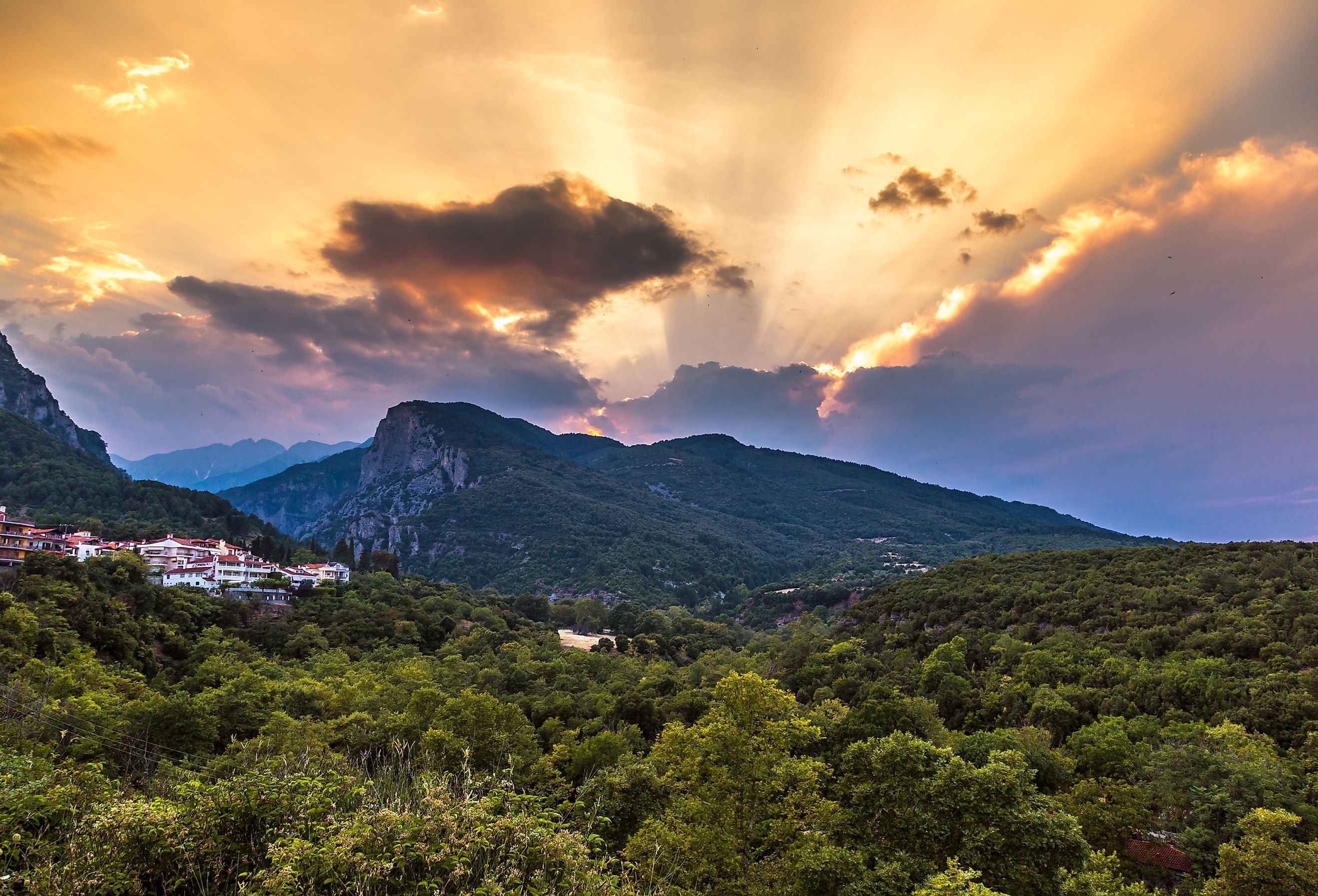
Mount Olympus
Greek mythology tells us that the striking Mount Olympus was once the permanent home of the Olympian gods. It was Zeus’s fort when he fought the Titans. When the conflict ended, Mount Olympus turned into a glorious citadel. Its palaces sparkled with gold and marble and sat on massive bronze foundations.
Today, it is clear why this mountain, the highest in Greece, is said to have housed the mighty Olympians. Its 52 peaks and gorges are majestic, with the pinnacle of Mytikas reaching for the heavens at 9,572.60 feet above sea level. Mount Olympus forms part of the larger Olympus mountain massif, situated close to the Thermaic Gulf, which in turn is part of the Aegean Sea.
Mount Olympus Geology
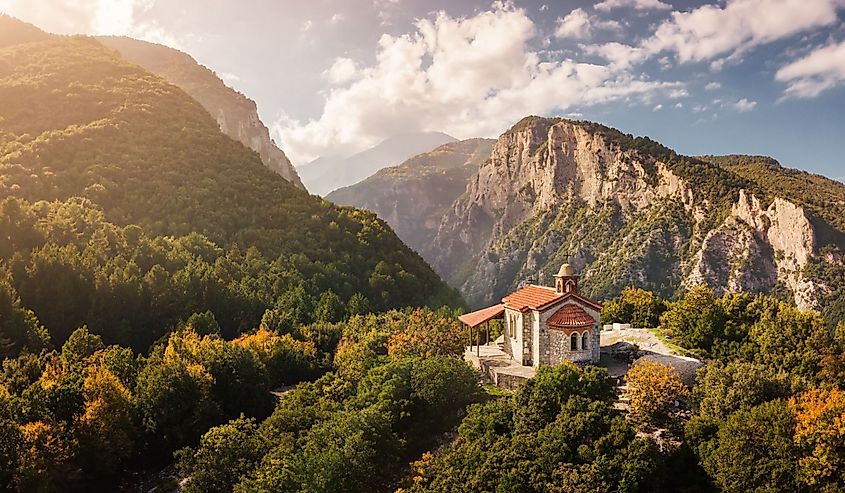
The geology of Mount Olympus is just as fascinating as its mythological past. Geologists believe that the mountain is a tectonic window, which means the region consists of layers of younger rock that pushed upward, exposing the older rock below. They have two working theories about why this happened.
The first theory states that the exposed (older) rock is part of the Gavrovo-Tripolitza Belt. This is a geological zone that lies beneath another layer. This layer is mainly limestone, a sedimentary rock made up of the remnants of marine organisms. Scientists believe that limestone deposits in the area occurred within a massive timeline that includes the Triassic, Jurassic, and Cretaceous periods.
However, some geologists disagree and propose that Mount Olympus is part of the Pelagonian Belt. The belt’s limestone sequence represents a time of disruption within the sedimentation.
While the experts may be at odds with these theories, they mostly agree that Mount Olympus formed around 200 million years ago. The nearby shallow sea expelled sedimentary rock deposits to help form the mountain. Moreover, geological events that took place because of glacial movement created various hollows or depressions. As the glaciers melted because of increasing temperatures, the water moved chunks of crushed rock from the bottom of the forming mountain toward the sea. The remaining rock eventually shaped into an alluvial fan, creating Mount Olympus as we know it today.
Mount Olympus Climate
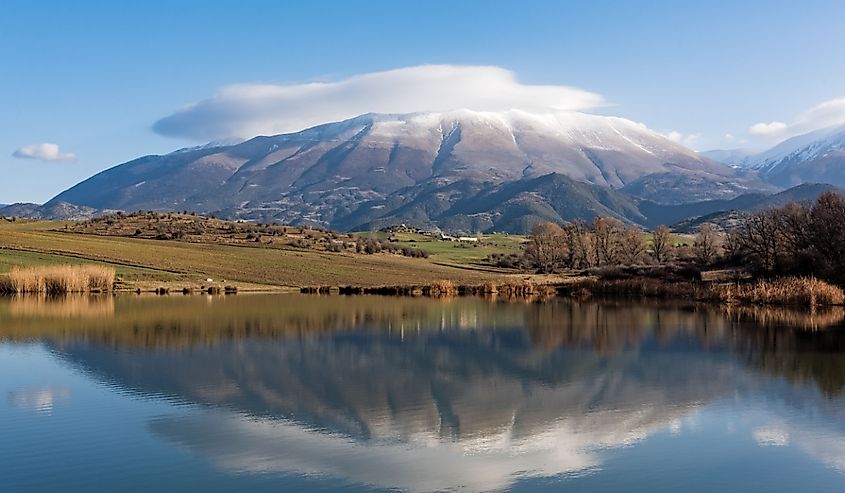
Like Greece below, Mount Olympus boasts a Mediterranean climate. When summer arrives, it is warm and dry for several months. When the weather turns cold, the rain comes. The highest peaks are usually snow-covered for at least seven months between November and May. The temperature tends to drop at least 1 °C for each 200 m elevation. The northeast slopes of the mountain, on the coastal side, usually receive more rainfall compared to the continental northwest slopes. A weather station in Greece records temperature extremes on Mount Olympus. It has been established that the average temperature during winter can be as low as -5 °C, while the average for summer is 10 °C.
Plants Of Mount Olympus
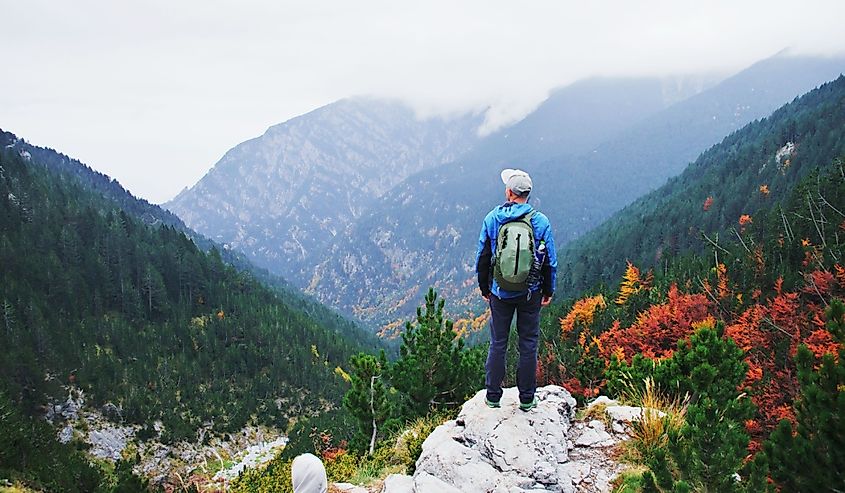
Mount Olympus is home to more than 1,700 plants, which totals around 25% of the flora in Greece. The different elevation zones and the mountain’s location (close to the sea) make diversity possible. There are a majority of deciduous greens (bushes and trees), as well as pine and fir trees. Moving upward, conifer forests, which include the stunningly rare Bosnian pine tree, easily withstand the cold. These forests eventually taper off to make space for vegetation and magnificent wildflowers.
Animals of Mount Olympus
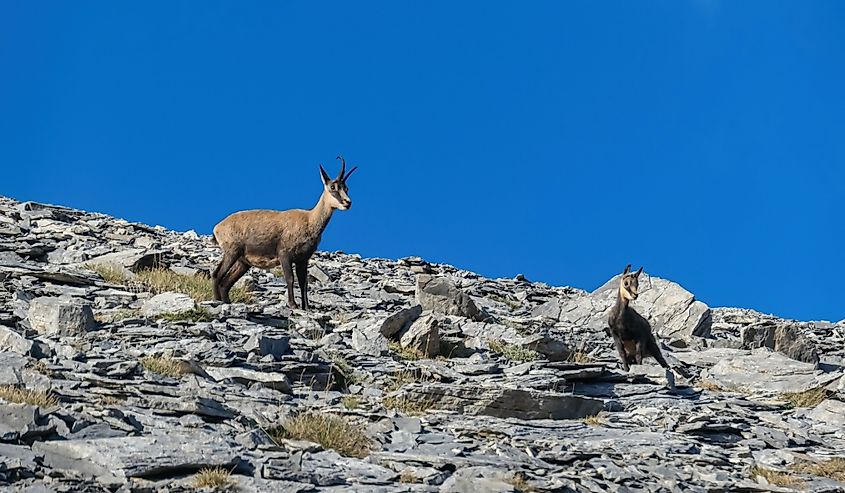
Mount Olympus also forms part of the Mount Olympus National Park, established in 1938. The park is a UNESCO Biosphere Reserve and the perfect place for adventurers and nature lovers to enjoy the plants, birds, and trees. There are more than one hundred bird species here, including golden eagles, peregrine falcons, and sparrow hawks. There are also large animals within the park. These include roe deer, wild goats, foxes, wild cats, chamois, jackals, and wolves.
A Legend That Refuses To Fade
This gorgeous mountain still owns the legacy of legends that refuse to fade. Linking to the mythology that says the mountain housed the Olympians, legend has it that the summit doubled as Zeus’s throne. The twelve gods and goddesses lived further down in their palaces built with the valleys. It is said that these deities preferred to live like humans, ruling from the mountaintop but also engaging in everyday activities.
Early Greek tribes built their homes in the foothills of Mount Olympus, not daring to ascend higher because they would then infiltrate the exclusive kingdom of the Greek gods. As the years passed, people left their mountain villages in favor of living in coastal cities. This led to Mount Olympus becoming a revered destination for tourists who hope to find a little bit of Greek magic within its slopes.











